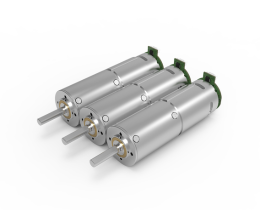The Quiet Powerhouse You’ve Never Noticed (But Can’t Live Without)
Let’s talk about something that’s probably hiding in plain sight around you right now. That coffee machine humming on your counter? The automatic door sliding open at the grocery store? Even the tiny adjustments your office chair makes when you lean back? They all share a secret: a DC gear motor.
.webp)
You’re squinting at the screen now, thinking, *“Wait, what even *is* a DC gear motor?”* Fair question. Let’s break it down casually. Imagine a regular motor—spins fast, does the job. Now add gears to it. Why? Because sometimes raw speed isn’t useful. You need control. Precision. Torque. That’s where the “gear” part comes in. It’s like giving a sprinter the ability to lift weights—suddenly, they’re versatile.
Here’s the thing: DC gear motors are everywhere, but nobody talks about them. They’re the unsung heroes of motion. Think conveyor belts in factories, medical devices that adjust incrementally, or even your kid’s remote-controlled car. They don’t just “spin”; they solve problems.
But Why Should You Care?
Let’s get practical. Say you’re designing a solar-powered garden light that tilts toward the sun. A basic motor might rotate too fast, overshooting the perfect angle. A DC gear motor? It slows things down, delivering just enough movement to track sunlight without jerking around like a caffeinated robot. Efficiency meets elegance.
Or picture this: A small bakery uses a dough-kneading machine. Without precise torque control, the dough gets overworked. With a geared motor, the machine mimics the rhythm of human hands. Consistency matters—and so does avoiding hockey-puck bread.
Myth-Busting Time
“Aren’t all motors basically the same?” Nope. A DC gear motor isn’t just a motor with accessories. The integration of gears reduces speed while boosting torque—like shifting into low gear on a bike to climb a hill. It’s physics doing you a favor.
“Do they break easily?” Not if you choose wisely. Quality matters. A well-built unit (cough, KPOWER, cough) can outlast the device it’s powering. Less maintenance, fewer headaches.
The KPOWER Difference
Let’s cut through the jargon. What makes a DC gear motor reliable? Three things:
- Materials: Cheap gears wear down. Ours? Machined to handle stress without drama.
- Design: Compact doesn’t mean fragile. Ever seen a motor fit into a drone and an industrial pump? Flexibility is key.
- Testing: Imagine a motor running nonstop for weeks. We do that—so you don’t have to.
Real-World Magic
A farmer once told me his automated chicken coop doors kept jamming in winter. Switched to a geared motor, and suddenly, the doors opened smoothly even in -10°C. Small fix, big impact. That’s the beauty of these motors: they turn “almost works” into “works perfectly.”
Final Thought
Next time you see something move with quiet precision, remember: there’s a good chance a DC gear motor is behind it. And if you’re building something that needs to move just right? Well, you know where to start.
No hype, no fluff—just motion made smarter. KPOWER designs for the real world, where reliability isn’t optional.


































.webp)

